Varicosis is a leg disease, which not only spoils the aesthetic appearance of a person, but can also lead to a series of serious complications.The main causes, symptoms and methods to treat varicose veins in the legs are described in detail later.
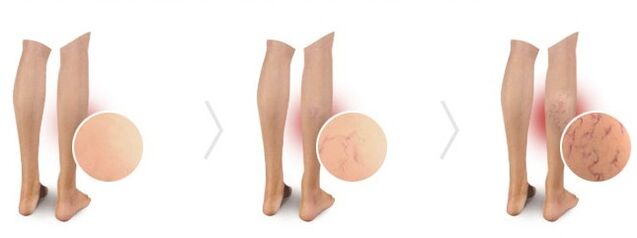
Medical certificate: varicose veins
Varicose veins: a chronic disease of peripheral veins of the lower extremities with a progressive course.It is characterized by a pathological expansion of the veins, which is manifested by a violation of the reverse blood flow in them due to the weakness of the valves and the wall of the vessels.As a result, there is a stagnation of venous blood and an increase in pressure in the veins, whose walls over time lose elasticity and begin to stretch and deform.According to the international classification of diseases, the ICD-10 varicose veins of the lower extremities have code 183.
The causes of the disease
The etiology of varicose veins is not well studied.Doctors consider poleetiological disease, but several development theories distinguish:
- Mechanical theory Excessive load in the lower extremities: with standing work (surgeons, dentists, teachers, hairdressers), athletes, pregnant women.
- Neuroendocrine theory. Due to hormonal change (pregnancy, menopause, sexual maturation), the tone of the walls of the blood vessels is reduced.
- Genetic predisposition.Congenital functional development of valves in the veins.
Risk factors for the development of varicose veins:
- female gender;
- inheritance;
- Overweight;
- load loads;
- A sedentary lifestyle.
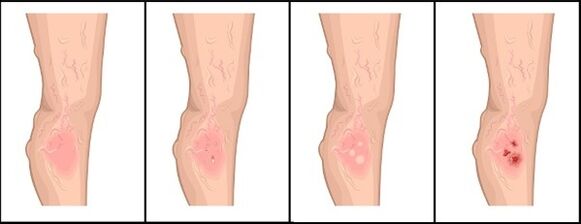
Symptoms of the disease
The manifestations of the disease are:
- The appearance of a vascular mesh in the form of skin stars is teelangioectasia.
- Skin changes: dryness, pigmentation.In the posterior stages: dermatitis, eczema, trophic ulcers.
- A bulky characteristic through the skin of the excusable veins in the lower extremities.
- The appearance of pain and discomfort in the legs, especially after physical effort.The pain can have a different character (pulsating, ardor, pain), the time of occurrence (pain when walking, at the end of the day, at night).
- The development of edema and convulsions of the calf muscles.At first, swelling in the region of the foot is observed, then applied to the bottom of the leg.
Stages of Varicose Venas Development
The disease develops in stages and slowly.It can happen for several years when your first symptoms appear.
- Stage 0. It is characterized by non -specific characteristics, such as gravity and discomfort in legs that can be symptoms and other diseases (osteochondrosis, flat feet).At this stage, the disease is also difficult to diagnose due to the lack of the main deformation of attributes and the performance of the extended veins in the legs.
- Stage 1. Skin changes: vascular stars are linked to previous complaints.
- Stage 2. The swollen and sinuous veins enlarged, the nodules are characteristic.
- Stage 3. The appearance of edema is especially pronounced at the end of the day.
- Stage 4. It is manifested by irreversible changes in blood vessels and trophic lesions of the legs due to deteriorated blood circulation and insufficient nutrition of tissues.Strong skin pigmentation (dark brown) is characteristic.
- Stage 5. Healing of trophic ulcers.
- Stage 6. The trophic ulcer is not tight.
Possible complications
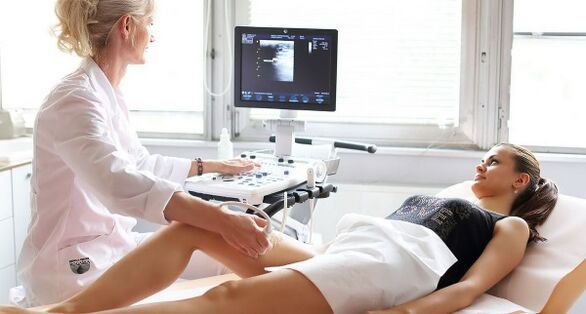
The disease itself is not dangerous for life, but its complications are dangerous as a result of an inappropriate or inappropriate treatment:
- Acute thrombophlebitis of surface veins: inflammation of the walls of blood vessels, the formation of blood clots from blood clots, which undertook blood circulation in the tissues;
- Thromboembolism of the pulmonary artery: blocking of the light of the pulmonary artery with a thrombus, which separated from the wall of the glass, often has a death;
- phlebotrombosis;
- Trophic ulcer: occurs with advanced forms of varicose veins due to tissue nutrition with blood;
- bleeding nodes.
When to see a doctor
Varicose veins are diagnosed and treated by a phlebologist (cardiovascular surgery).In order not to miss the beginning of the disease, it is necessary to contact a specialist in the first signs:
- the appearance of vascular stars on the legs;
- a feeling of discomfort in the legs, pain;
- Swelling and fast fatigue;
- Night seizures;
- markedly expanded veins.
The varicose veins in the legs, whose treatment was timely and effective, to less threaten the appearance of complications.
Diagnostic measures
To date, the main diagnostic method is ultrasound.When diagnosing the varicose veins, such measures are carried out:
- Ultrasound dopplerography. A method that combines the use of ultrasonic diagnoses and doppler and allows it to evaluate the nature of the movement of the blood through the vessels, the presence of an inverse blood foundry, blood clots, the condition of the vessels in the cut, the operation of the venous valves (the presence of the flotation) and the belonging of the peripheral and deep veins.There are several types: color dopplerography, duplex and triplex dopplerography.
- The duplex scan (ultrasound) is a type of ultrasonic dopplerography, in which 2 methods are used: dopplerography in mode and color.It allows you to determine the presence of blood clots, their size, the nature of the location, the possibility of separation.The method is not invasive, with high precision to establish a diagnosis and determine new treatment tactics.
- Flebomanometry: A method to determine blood pressure on the walls of the veins.
- Phleboscinmagraphy: The introduction of a radiopharmacy in Vienna and observation using a special device.The method is used for the combined pathology of the veins and the lymphatic system.
- Flebography is a radiological method that implies the introduction of an X -ray contract intravenously.In an X -ray image, the doctor will evaluate the status of the veins.Suitable for the diagnosis of deep veins, when ultrasound dopplerography was wrapped.
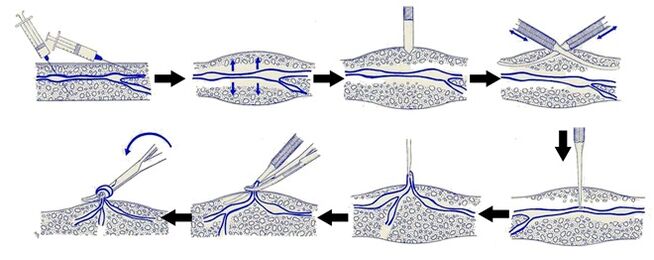
The last two methods are invasive, they have a series of contraindications (allergies to a contrast medium) and nowadays they are rarely used for diagnostic purposes.
Treatment methods
The varicose veins in the legs, whose treatment is carried out by two main methods in the complex (conservative and surgical), has a favorable prognosis.Conservative methods:
- Pharmacological treatment;
- the use of traditional medicine;
- physiotherapy;
- Compression therapy implies the use of special underwear;
- sclerotherapy.
Surgical methods:
- Varadi operation: elimination of affected veins (phlebectomy);
- Venic laser coagulation.
External treatment with creams, ointments and gels
The external use of creams, ointments and gels acts as auxiliary means in the early stages of the disease.Preparations help reduce swelling, pain, increase the tone of venous walls.
Laser treatment
The treatment of lazamaria (coagulation or laser ablation) is a minimally invasive method that is used in pronounced forms of the disease.Use lasers with different wavelengths.The laser light is inserted into the light of the veins and pastes its walls.In the future, such a line will be resolved.The procedure occurs under ultrasound control, it does not leave after strong bruises. Advantages of laser treatment: lack of a period of recovery, painless and safety of the procedure, a minimum of postoperative complications, scars and pigments.
Sclerotherapy
Sclerotherapy: It is the introduction of a special drug (sclerosantes) in the affected vein, which bites it from the inside and disappears over time.There are several varieties of this methodology: Eco-Sclerotherapy, MicroSclerotherapy.The procedure lasts 20 minutes, the sclerotherapy sessions required from 3 to 5. This treatment method is widely used in many countries of the world and provides a long result and in the initial stages, for life.However, with advanced and severe ways, sclerotherapy does not give a hundred percent guarantee.
Hydrotherapy

The treatment of hydrotherapy (water therapy) in the form of several types of bathrooms (with herbs, salt) and shower (circular, massage, contrast) helps reduce the light of blood vessels, help relieve fatigue and swelling of the legs.
The use of means and means of varicose veins
The use of compression linen (hardening) helps in the early stages of varicose veins by eliminating blood stagnation in the peripheral veins and redistributing it of expanded vessels to other healthy. The use of such knitwear is possible for preventive purposes and during rehabilitation.
Surgical therapy
The surgical elimination of the affected veins: phlebectomy is a radical, complex but more effective (almost 100% cure) method.However, phlebectomy has a series of contraindications: diseases of the cardiovascular system, liver, kidneys, pregnancy.After the operation, for a month, you must use a delay compression linen or apply an elastic bandage in the leg.
Physiotherapy
The treatment of varicose veins with physiotherapeutic methods is effective for prevention, in the initial stages of the disease, as well as in complex therapy.Widely used: laser therapy, darsonvalization, magnetic laser therapy, pneumocompression, UHF, balneo and mudraphy.Physiotherapy helps strengthen the walls of blood vessels, improves the operation of valves, microcirculation and lymphocide in the limbs.A visible result is achieved with the regular treatment of the course in combination with other therapy methods.
Popular remedies
Treatment with popular remedies of varicose veins in the legs is widely popular in patients.However, it should be taken into account that all non -traditional medicine methods are ineffective in severe forms of the disease.Popular remedies for the treatment of varicose veins:
- Medicinal herbal tinctures: Kalachoe, Ortiga, chestnut of horses, ginseng root, nutmeg;
- lotions and compresses made of clay, honey;
- soda baths, sea salt;
- ointments (Vishnevsky);
- Hirudotherapy (treatment with medical leeches).
Using apple vinegar
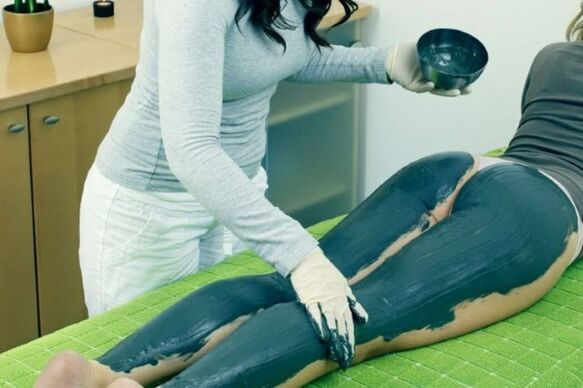
Many specialists recommend the use of apple vinegar for the treatment of varicose veins.It is advisable to cook the product yourself and not buy in the store.To prepare vinegar, you must grind sweet apples, then pour them 3 cm on warm water.Leave the product to infuse for 2 weeks, sometimes stirring with a wooden spoon.Strain and add several spoons to a glass of water to rub.Vinegar can rub on the skin of the painful legs, make compresses, wraps, bathrooms.The tool strengthens the venous wall, improves blood circulation in them, reduces swelling.
Use clay lotions and compresses
Blue clay in the form of lotions and compresses is often used for preventive purposes and with early manifestations of varicose veins. Place the diluted dust with warm water with a thick layer on the feet, wrap it with an adhesive film and wrap it with a warm scarf.Keep the application for 40 minutes.Or request a gauze affected by gauze 30 minutes, greased with clay with chopped garlic.This therapy with regular use (a course of 2-3 weeks) effectively relieves the discomfort in the legs, swelling and fatigue.
Use of acacia flower tincture
For the treatment of varicose veins, a white acacia colored tincture is used.To prepare it, you must fill the raw materials in a 3 -liter bottle and pour 0.5 liters of vodka and medical alcohol in 1/3, cover with a lid.Insist on a mixture in a dark place for two weeks.Lubricate the painful legs with the finished tincture 5-7 times a day.Tincture will help relieve the symptoms of varicose veins.
Using ginseng tincture
The ginseng root is a natural tonic to strengthen venous vessels.The finished tincture can be purchased in a pharmacy or prepare independently pouring 0.5 liters of vodka 150 g of crushed dry ginseng.Insist the liquid in a dark place for 2 weeks.The tincture to carry inside with an empty stomach 1-2 tablespoons 4 times a day.
Using the Ortiga
Ortigas healing properties have been known for a long time.The plant improves blood circulation, prevents blood stagnation, strengthens the walls of blood vessels.To prepare the therapeutic decoction of the ortiga, fresh or dry leaves crushed pour a liter of boiling water.Insist a couple of hours and tension.For a month, drink a decoction of a third of a glass 3 times a day.
Using potatoes
Indeed, the use of potatoes for varicose veins in the form of compresses, lotions.For the compress, mix the tuber freshly launched with a spoonful of honey and apply to the painful areas, fix with a film and a bandage at the top. Keep a 5 -hour compress and wash it with warm water.The treatment course is 3 weeks. The compress helps eliminate swelling, pain, a vascular network on the legs.
Varicose veins prevention
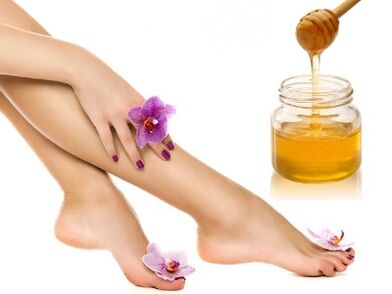
To prevent the development of varicose veins, it is worth observing the following measures, especially those that are at risk:
- Keep the normal weight;
- Avoid prolonged position;
- Walk more on the foot, he exercises with his legs;
- Limit Wear high tub shoes;
- limit the use of alcohol and cigarettes;
- participate in some kind of sport (swimming, cycling, aerobics);
- Water procedures (contrasting shower, relaxing legs);
- Use compression underwear;
- Adhere to adequate nutrition.
Varicose veins in the legs - treatment and diagnosis - important components of rapid recovery.To date, there are a number of non -traditional medicines and media that promise to get rid of varicose veins.
If the varicose veins in the legs are not ignored and the treatment begins in time, then there is a high percentage of favorable forecast.In the initial stages, conservative therapy is shown: medications, creams, compression knit garments, physiotherapy, traditional medicine recipes.In pronounced forms: laser ablation, the elimination of advanced veins.

















